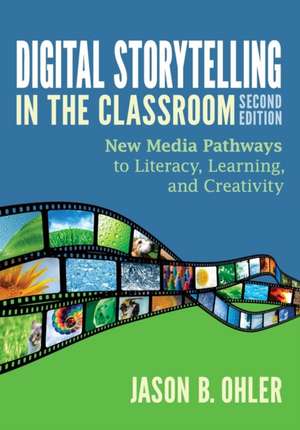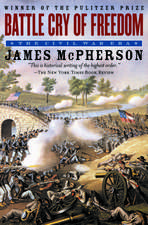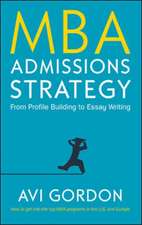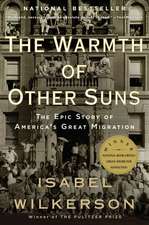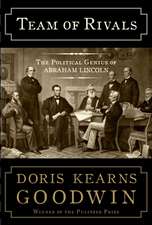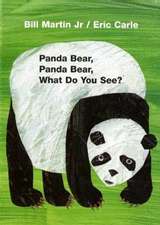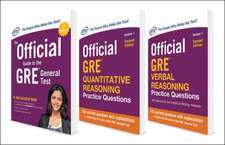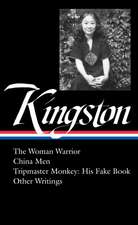Digital Storytelling in the Classroom: New Media Pathways to Literacy, Learning, and Creativity
Autor Jason B. Ohleren Limba Engleză Paperback – 13 mai 2013
"Use digital storytelling as a tool to promote the development of emerging literacies, such as digital and media literacy, as well as traditional literacies, such as reading, writing, speaking, and art.
"Help students use digital storytelling as an academic tool to explore content and to communicate what they understand.
"Understand the importance of combining the power of story and critical thinking as an approach to teaching and learning.
Preț: 324.28 lei
Nou
62.05€ • 64.11$ • 51.62£
Carte disponibilă
Livrare economică 26 februarie-12 martie
Livrare express 12-18 februarie pentru 95.23 lei
Specificații
ISBN-10: 1452268258
Pagini: 304
Ilustrații: Illustrations
Dimensiuni: 178 x 254 x 20 mm
Greutate: 0.58 kg
Ediția:Second Edition
Editura: SAGE Publications
Colecția Corwin
Locul publicării:Thousand Oaks, United States
Cuprins
Foreword by David D. Thornburg
Preface
Acknowledgments
About the Author
Part I. Storytelling, Education, and the New Media
1. Confessions of a Digital Storytelling Teacher: Twenty Revelations About Digital Storytelling in Education
2. Defining and Discussing Digital Storytelling: Helping Teachers See, Think, and Talk About Digital Storytelling
3. Digital Storytelling as an Educational Tool: Standards, Planning, and Literacy
4. Assessing Digital Stories: The Opportunities and Challenges of New Media Evaluation
Part II. The Art and Practice of Storytelling
5. Thinking About Story: The Story Core, Story Mapping, Story Types
6. Applying Story Maps, Using Story Tables: Seeing the Core, Mapping the Story, Creating a Story Table
7. Story Planning Considerations: Tips, Techniques, Lessons Learned
8. Transformation Formations: How We, and the Characters in Our Stories, Change
9. More Story Maps: From Aristotle to Present Day
10. Other Kinds of Stories: Other Story Forms and Story Perspectives
Part III. Going Digital
11. The Media Production Process, Phase I: Developing the Story
12. The Media Production Process, Phases II-V: From Preproduction to Performance
13. The Digital Storytelling Toolbox: The Tools Teachers and Students Need to Tell Digital Stories
14. Media Grammar for Teachers: Assessing Media Expression
15. Copyright, Fair Use, and UOPS: Living in the Gray Zone, Doing the Right Thing, and Protecting Yourself
Epilogue: If I Had a Time Machine
Resource A. Teaching Oral Storytelling
Resource B. Audio Techniques for Video Recording Oral Storytelling
Resource C. Audio Techniques for Interviewing People
Resource D. Freytag's Pyramid
Resource E. Grammar of Camera Angles
Resource F. What's Scannable?
Resource G. Joseph Campbell's Story Adventure Diagram
Resource H. Visual Portrait of a Story
References
Index
Descriere
This text shows how to integrate storytelling into curriculum design and use the principles of storytelling as a measurement of learning and literacies. It also covers important copyright and fair use information, and offers numerous implementation tips, concrete examples, and illustrative video clips. Aimed at primary and secondary teachers, the book is designed to help them: "Teach their students to create digital stories that employ effective principles of storytelling, technology application, and media technique.
"Use digital storytelling as a tool to promote the development of emerging literacies, such as digital and media literacy, as well as traditional literacies, such as reading, writing, speaking, and art.
"Help students use digital storytelling as an academic tool to explore content and to communicate what they understand.
"Understand the importance of combining the power of story and critical thinking as an approach to teaching and learning.
